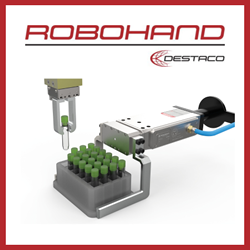Global Oceans and Liquid Robotics Form Strategic Alliance to Accelerate Access to Ocean Data
Expanding use of new technology for ocean science
Chicago, IL June 11, 2013
Global Oceans and Liquid Robotics today announced they have established a strategic agreement to jointly develop and promote new opportunities for ocean scientists to utilize Wave Glider® robotic technologies for scientific research on expeditions hosted by Global Oceans. One of the key goals of the Alliance is to accelerate researchers' access to ocean data. Today, scheduling time on most research vessels to collect critical data has a queue of a year or more and transits to remote study areas are time consuming and expensive. The Global Oceans model of chartering globally distributed commercial vessels for oceanographic research was designed to address these limitations. The strategic alliance with Liquid Robotics will leverage and add value to this approach by coupling these new tools and services with greater access to the world's oceans.
Liquid Robotics will make available a fleet of Wave Gliders for rapid deployment and available for use on a day-rate or longer-term lease basis through Global Oceans. As a result of the Alliance, Global Oceans can more readily mobilize these research and ocean observation tools for scientists to utilize on its expeditions.
Ship-based research and observation applications envisioned for the Wave Gliders include gathering environmental data over large areas during the course of an expedition; for generating three-dimensional mapping of acoustic signals in the field; for long term deployment within study areas for later retrieval; and in communication gateway applications in support of submersible operations and other sub-surface instrumentation and vehicles.
"While the rapidly evolving suite of Wave Glider platforms and enabling technologies are inherently designed to facilitate autonomous operations at sea, Global Oceans is interested in fostering and supporting the many applications where ship-based deployments are beneficial and where project-specific use of these assets can support traditional research on future Global Oceans' expeditions," said Jim Costopulos, CEO of Global Oceans. "The availability of Wave Gliders as part of this agreement will provide a valuable set of assets for scientists to modify and deploy on a project basis."
Project-related technical support, training and instrument modification (e.g. sensor installations) will be made available to researchers for these and any additional units. Technical product data will also be supported on the GO-CEPT expedition-planning platform to be launched by Global Oceans in the near future.
"The alliance with Global Oceans opens new opportunities for customers to deploy Liquid Robotics' unmanned ocean robots to greatly expand ship-based research capabilities," said Gary Gysin, executive vice president, Liquid Robotics. "We look forward to working with Global Oceans to help scientists get their critical data faster and with greater geographic reach."
About Global Oceans:
Global Oceans is a US-based 501(c)(3) nonprofit organization that has developed an optimized chartered ship model for oceanographic research applications which incorporates the short-term utilization of globally dispersed offshore service vessels, modular laboratories, analytical equipment and global logistics support. More information is at http://www.global-oceans.org.
About Liquid Robotics:
Liquid Robotics is an ocean data services provider and developer of the Wave Glider®, the world's first wave powered, autonomous marine robot designed to help address the biggest challenges the world faces, including global climate change, national security, hurricane and tsunami warning, and offshore energy and resource management. For more information, visit http://www.liquidr.com.
Featured Product

DESTACO - Revolutionizing Industrial Automation
Looking for a reliable solution to enhance your automation process? Look no further than the DESTACO Robohand Grippers. These grippers are designed for the modern world of robotics, offering unparalleled performance and precision. Whether you need to grip fragile items, irregularly shaped objects, or heavy-duty components, the DESTACO Robohand Grippers have got you covered. Their modular design allows for quick and easy customization, ensuring a perfect fit for your application.
